Today is 1 July, and throughout the whole of June we’ve been taking part in the ’30 Days Wild’ initiative, hosted by The Wildlife Trusts. What that means is basically that we’ve done at least one thing per day to connect in some way with the nature and wildlife around us. They’ve all been pretty simple little things, like going for a walk and taking notice of what insetcs we can find, or drawing a flower and doing some simple hands-on learning about pollination.

I’ve been posting about what we’ve been up to on our social media, mainly on Instagram but also a few posts on facebook and twitter. Now that the #30DaysWild are over, I’d like to collect all these nature-based and sensory rich learning experiences here on the blog, to serve as inspiration for the rest of the summer (and hopefully even longer than that!).
To put all 30 days in one post would be way too much, so I’m splitting it up into 3 posts of 10 days each. I hope you’ll enjoy seeing what Penguin has been up to together with me and hubby, and perhaps feel encouraged to do more exploring of your local nature and wildlife, too!
So, just to clarify, the texts for each day below are taken straight from our social media posts, as I wrote them at the time, with some very minor edits such as removing emojis and things like ‘swipe to see more pictures’, which isn’t relevant for this format.
DAY 1 – ANIMAL FOOT PRINTS
I always hesitate to commit to daily challenges, as I know there will most likely be days when I/we struggle to fit it into our day. But as we got off to a decently ‘wild’ start to the month yesterday, I’ve now decided that we’ll give the #30dayswild a go. Check out @thewildlifetrusts for more info, if you’re interested! Better to try and fail, than not try at all (in this case anyway), right?

So, our main ‘wild’ thing yesterday was looking at animal foot prints in the mud banks at Rye Harbour, on our early evening walk.

We’re definitely not experts at animal tracks, and the ones seen in the first picture here had us guessing… I think we’re fairly sure now that they are from a fox! (If you think it might be something else, please let us know. We don’t have any coyotes or wolves around here though, nor any kind of bear, unless they’ve escaped from captivity…).

The prints in pic 2 are obviously from a bird, and we’re assuming it’s from a gull of some kind, as there are gazillions of them down there, in the harbour. [EDIT: Nope, not likely to be from a gull! More probably something of a similar size but not with webbed feet. Possibly a crow or a dove?]
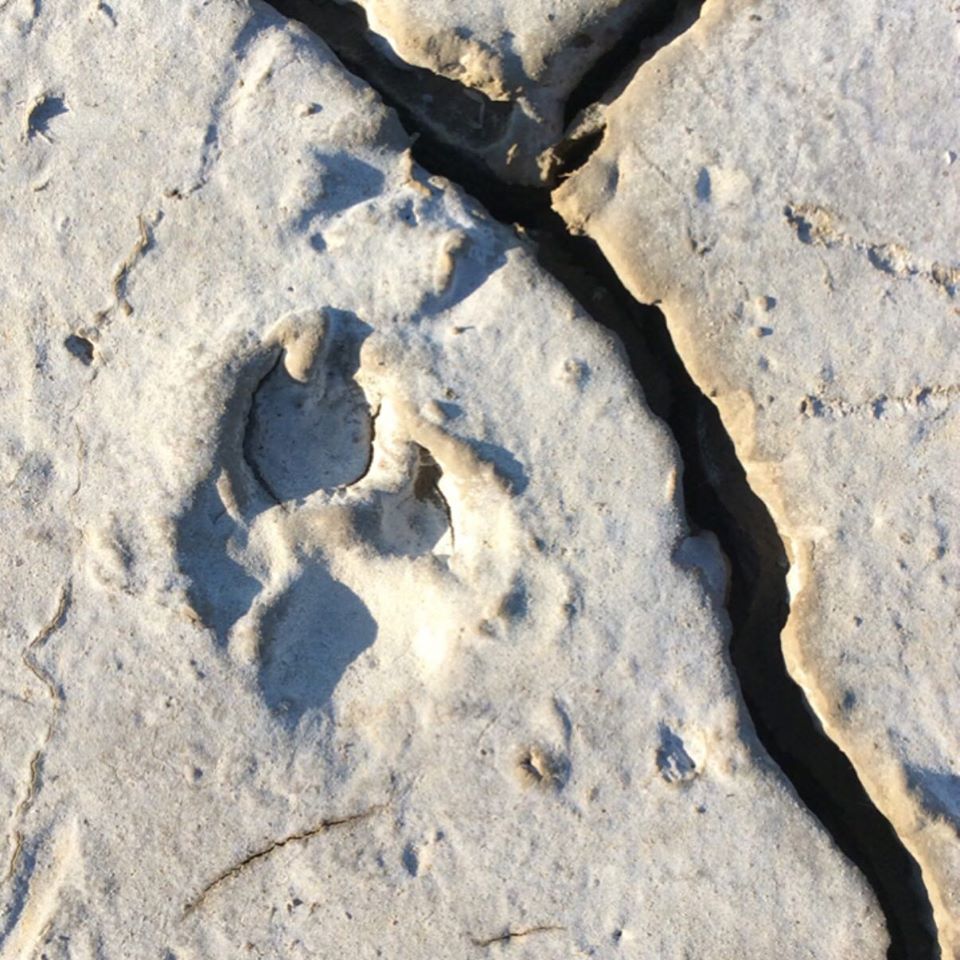
Picture 3 shows the paw print of a reasonably large dog.
We also spotted that a human being had been walking barefoot on the mudbank, but I’m saving my photo of that for another day…
I hope you weren’t expecting anything more exotic? We do get seals at the harbour sometimes, but didn’t see any traces of them yesterday. .
Are you doing the #30dayswild this June?
DAY 2 – FRIENDLY SHEEP & EVENING SKIES
I guess the sheep we met on our walk Tuesday evening aren’t really wild animals, but they’re certainly part of the landscape. And they’re adding a fair amount of ‘fertiliser’ to it as well!

Penguin is pretty comfortable around the sheep and lambs nowadays. He doesn’t chase them or try to cuddle them or anything, but always seems happy to have them around. I like to think the feeling is mutual.

We saw lots of little bunny rabbits as well, and they’re definitely part of the wildlife here, but they were scooting around at the speed of light, or too fast for me and my camera to catch them anyway.

We also stopped by the river to look at the lovely reflections of evening clouds on the water surface. And the moon made an appearance too. Full moon coming up in the next couple of days, so I’m expecting lots of ‘fun’ staying awake with Penguin the Werewolf…

Earlier in the day we did a bit of observational nature sketching in the garden, as I’d seen that activity suggested on the 30 Days Wild twitter account. We used iPad and an app called Drawing Pad, as Penguin is very keen on using that at the moment. Here’s his drawing of daisies in our lawn:

I helped by showing him on another device (which has the same app on it) how he could go about it. So he kind of copied what I did, but in his own style. When he was at school (before we started homeschooling), there was a tendency of them ‘helping’ by using ‘hand over hand’. He didn’t respond well to that, and I don’t think it’s right to use it if the child/person has the ability to do things by their own hand.
DAY 3: HANGING OUT WITH THE GULLS
We went to the beach on Wednesday evening. The tide was out and some of the gulls were busy picking up cockles and other clams, flying up into the air and dropping them to make their shells open, to claim a tasty meal. Others were busy trying to steel food off their mates, and some were just chilling.
The word ‘seagull’ is an informal term for any kind of gull. These are Herring Gulls, which is one of the most common birds of the gull family. But despite still being a very common bird, especially in coastal regions, they’re actually on the red list due to rapidly declining numbers. Certainly no lack of them (nor their excrement) around here though! Most of the ones we met on the beach this time were last year’s babies, halfway between the more brownish baby plumage and their adult look of clean grey and white.
As you can see in one of the pictures, we took a proper look at the footprints these gulls left in the sand, and they show their webbed feed clearly. So we’re now pretty sure that the bird tracks we found in mud the other day (see post from day 1) were NOT from gulls but rather something like a crow or dove (or other reasonably large bird with no webbing).
Have you been out exploring your local wildlife lately? What did you find…?
DAY 4 – THE CHURCH WITHOUT A VILLAGE
We went out to Thomas á Beckett church at Fairfield, which is a funny old church sitting in a sheep field. When I posted about our visit to Warehorne recently [in an Instagram post], where we were surprised to find sheep roaming in the graveyard, I totally forgot about this place which has sheep too, but no graveyard. It also has no village around it, just farmland, the odd cottage & farm buildings.
The history behind it is that apparently there used to be a village around the church in medieval times, but that it’s now the only building left. It was first erected as a timber structure in the 13th Century, then thoroughly renovated in the 18th Century (w bricks & roof tiles added externally, & the interior modernised too). In 1913 there was additional work done to improve and preserve the building, & larger ditches were dug around it to prevent the fields getting flooded (which had happened regularly until then). Peeping through the windows, we could see the 18th Century interior & the massive timber beams of the original 13th Century construction.
When it comes to wildlife, we caught brief glimpses of a pheasant & a fox (not together, thankfully for the pheasant!), but they quickly hurried out of sight, so no photographic evidence I’m afraid. But some of the cattle in the next field were feeling pretty ’wild’, and I will include a video clip of that in a ‘highlight reel’ of our 30 Days Wild, which will be found in the third and final blog post in this series.
Earlier in the day we’d done a nature activity in our garden, repotting a couple of lemon plants which we started growing from seeds last year. Penguin wasn’t super keen, but I managed to get him to help a fair bit & as usual he enjoyed watering them in at the end. (In case you’re wondering, the water is brown due to plant food of an organic liquid variety.)
I’m hoping that we’ll get to see some blossom on our little lemon trees next year, but perhaps that is unrealistic? Anyone here who’s grown lemon trees from seeds..?
DAY 5 – NATURE PAINT BRUSHES
This was a rather grey and drizzly day. It was still mild though and not windy at all, so it was a good day for a bit of abstract painting outside, using ’brushes’ from nature.
In the garden we found a leafy twig, a feather and a weed to use as brushes, and we also added a few seed heads we had lying around from last year.
We used paints from IKEA which come in squeezy little bottles, and I always let Penguin squeeze the paint out as it gives good proprioceptive sensory input and is great exercise for his hands. To gain better control of the hands’ muscles, movements, strength etc can be of help in many other areas, including handwriting, use of cutlery, and getting dressed, to give just a few examples.
We created one painting each just in time before a hailstorm hit! We left our pictures outside as we hurried indoors, and let them dry outside overnight, with the weather adding to the final results.
DAY 6 – BUTTERFLIES
6 June was Butterfly Education And Awareness Day and I posted about that briefly on the day, but here are a few more pics from that day.
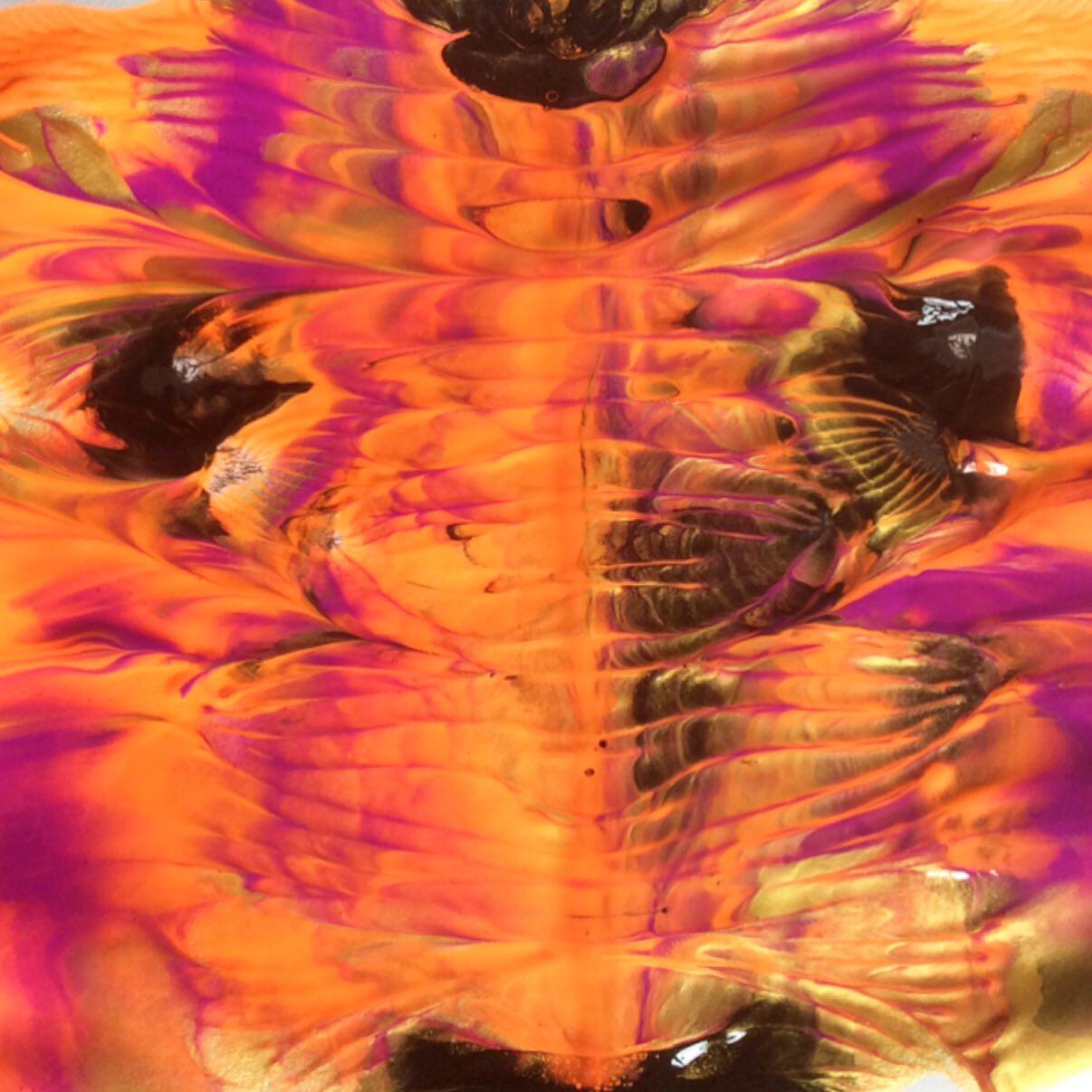
Firstly, the patterns on one of Penguin’s butterfly paintings, because I just love the effect of the colours flowing into each other.

Secondly, is it just me or does one of the paintings here look like a groundhog giving the finger?!

Thirdly, I know I keep saying it, but squeezing is really great exercise for the hands.
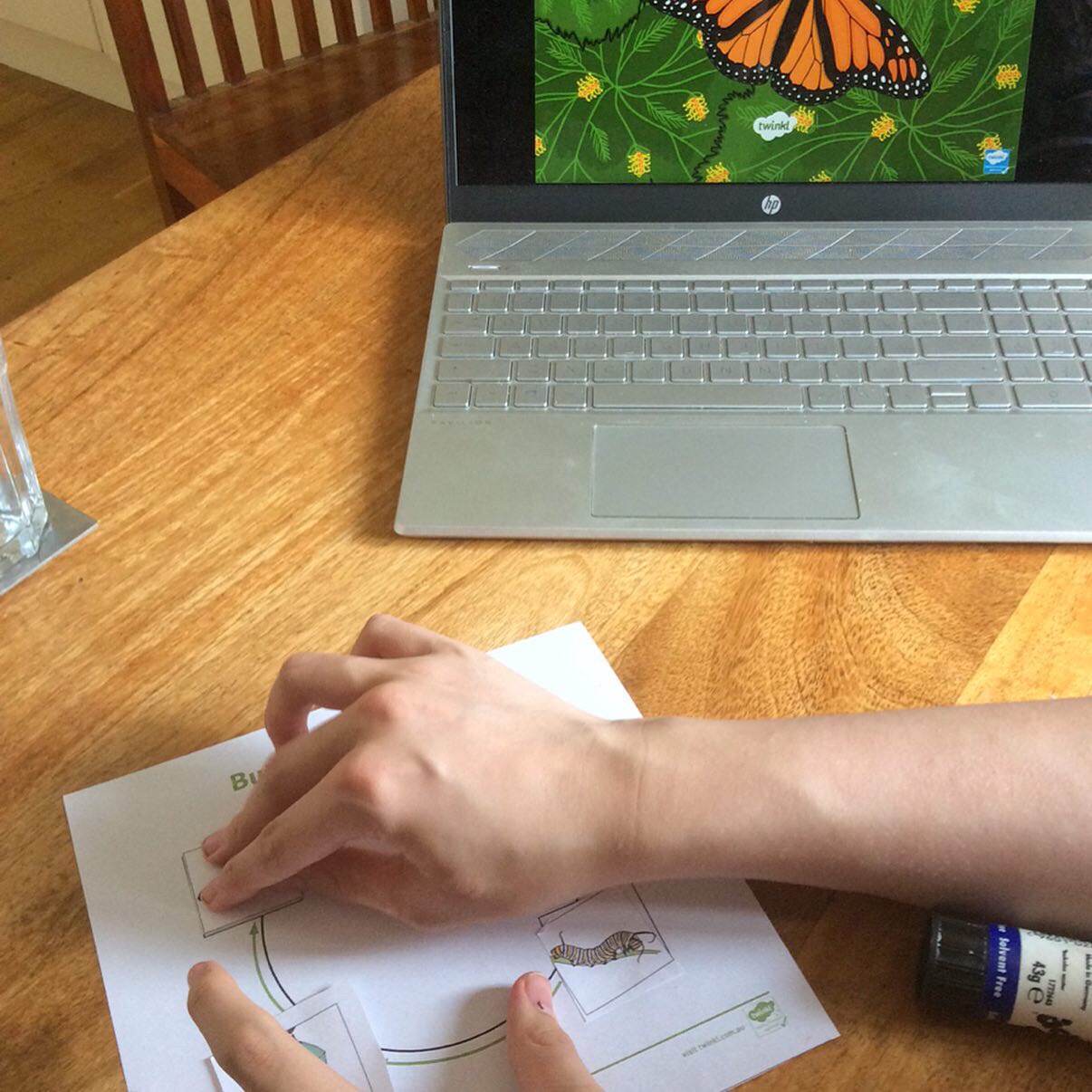
In the fourth and final picture here, you see Penguin doing some work on the life cycle of a butterfly, using resources from Twinkl. The most difficult thing for him on the day was resisting the temptation of nibbling the gluestick… Sensory processing differences can show themselves in many ways!
DAY 7 – BUMBLING BEES & RUMBLING CLOUDS
On Sunday we went for a walk by the sea at St Mary’s Bay. There were loads of bumblebees on the tree-mallows (Malva Arborea), so we looked at how they were picking up pollen as they went from flower to flower, and we’ve built on that to learn more about pollination this week (linking up nicely with butterflies as well, which we’ve continued looking at this week too).
We were very lucky not to get rained on, as the storm clouds were gathering and thunder started rumbling above us while we walked along the sea. We hurried back to the car as the rain started spitting, and as we drove off the skies opened to give the landscape a good soaking.
DAY 8 – THREE WISE CRABS
Monday 8 June was World Oceans Day. We went for a little exploring on the beach, and were lucky to find three young spider crabs!
Two of them were on their backs when we found them, and I thought they were dead (pretty much all the crabs we’ve found previously have been). But then hubby found the third on alive on its front, and we thought the other two might just be playing dead to avoid attention from the seagulls… So we turned them over, and after a moment’s hesitation they then started moving, shuffling down into the wet sand to hide.
Other wildlife we spotted on the beach that day were mostly gulls and clams, plus a large but not so lucky fish (note the seagull in the background, waiting for us to move away from his snack).
I love how the tide brings things in for us to discover, and also how it offers different experiences: from waves crashing up against the rocks or sea wall when it’s high, and then miles wide beaches when it’s low. Penguin’s favourite I’d say is low tide, giving him lots of room to run freely. And that’s my favourite too.
DAY 9 – SPOTTING WILD THINGS BY THE RIVER
One of the highlights for me so far this month happened last week when we went for a walk along the river Rother: We spotted a kingfisher! I’ve never seen one before, and to be fair I’ve barely seen one now either as it sped away very quickly, but its shimmering bright blue colour was immediately recognisable, so there was no mistaking what it was. Hubby sees them now and then around a pond at his workplace, but he was still happy to see one, while Penguin didn’t seem to think it was worth making that much of a fuss about. He’s a hard one to impress!
As the kingfisher disappeared so quickly, I haven’t got a photo of it to show you. But the holes in the riverbank seen in the picture here are very likely to be their nests!

The main kind of wildlife I’d hoped for us to see on our walk was butterflies. When we got there and saw that there were lots of nettles growing along the riverbank, I thought Small Tortoiseshell would be a good bet, as they are fairly common and like placing their eggs on nettles. Their name in Swedish even translates to ‘Nettle butterfly’ (Nässelfjäril). And it didn’t take long before we saw one, and then another, and a couple more after that.

We also spotted a caterpillar (and I’ll pop a video clip of that in the previously mentioned highlights reel) which was great as it provided a good opportunity to remind Penguin of what we’d been learning about the life cycle of butterflies. We didn’t know what kind of caterpillar it was, but after we got home I had a search online, and we could identify it as the caterpillar of a Peacock butterfly.
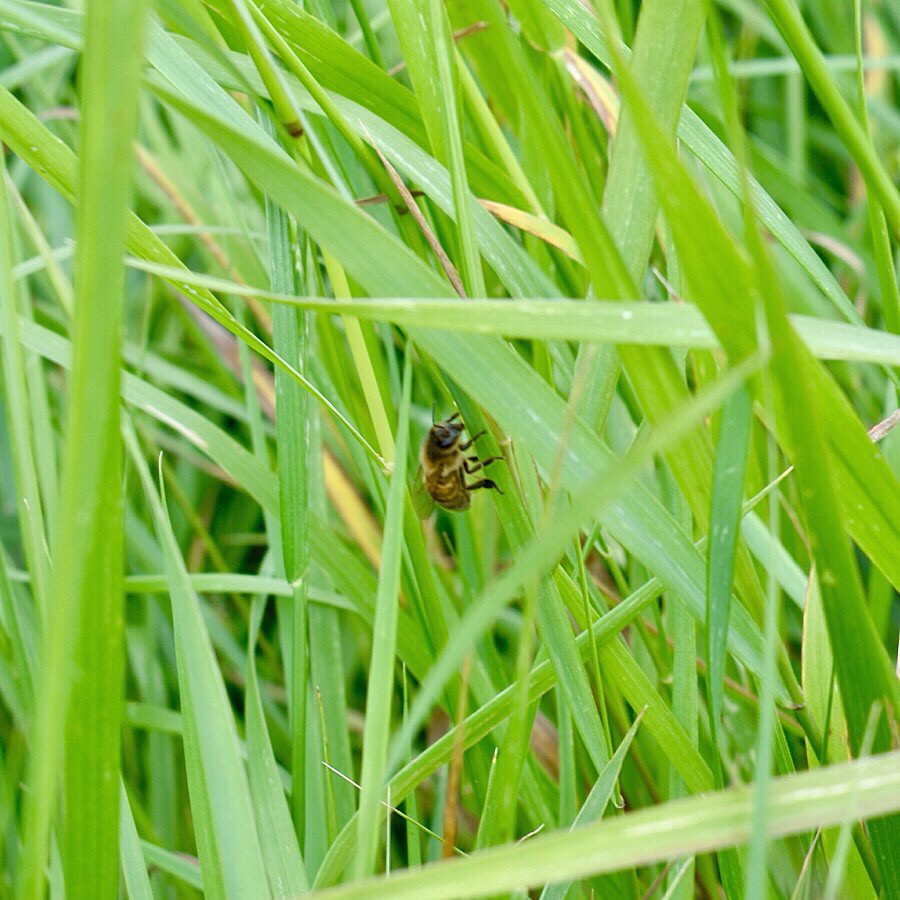
Another wild creature we came across was a little honey bee having a rest among the grasses. There’s a great overview of the most common UK bee species to be found here: https://www.woodlandtrust.org.uk/blog/2019/05/types-of-bee-in-the-uk/, and apparently there is only one type of honey bee, but over 250 bee species in total in the UK!
We had a really good walk along the river and the air was filled with the scents of summer, from Meadowsweet in particular. June has been good to us so far.
DAY 10 – CONSTRUCTION & DECONSTRUCTION OF A POPPY
As part of learning about pollinators like bees and butterflies, we’ve also been looking at the parts of a plant, to understand what pollination is and how it happens.
Two hands-on ways of learning about objects of various kinds is to either take them apart and analyse their components, or to reconstruct or recreate them piece by piece in the form of a model or drawing.
So, on day 10 of our 30 Days Wild, I set up this little activity of ‘building’ a poppy. We used the dried seed-heads of poppies from last year, which still had their stems, and added tissue paper to represent the petals, leaves from poppies growing in our parking space, playdough to make a root ball and some strands of hair-like seaweed as roots. Plus glue and tape to hold things together.
I’d printed out worksheets about the parts of a plant from Twinkl to go along with this activity, and also brought in a poppy from outside, which had finished flowering and was now at the seed-making stage. We had one of our fairly recent photos of a poppy at hand as well for reference.
Firstly we constructed our poppies, piece by piece, while checking the parts against the ‘Parts of a plant’ worksheet. After that, we started deconstructing our fresh poppy, and looked at the ‘Parts of a flower’ worksheet while slicing open the head of our fresh poppy to find tiny little seeds, like see-through moist granules, starting to form in the ovary.
We’ve done a few more activities linked to these same worksheets since this, and I’ll post about those too later.
If you have any favourite activities for learning about plants and pollination, I’d be very interested in hearing about them in the comments!
*******
THAT WAS OUR FIRST 10 DAYS OF 30 DAYS WILD, I hope you got some ideas and inspirations from this, and I’ll be posting part 2 and 3 of this series over the next few days. See you soon! x
PIN THIS POST!

Linking up with:










































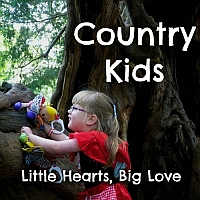

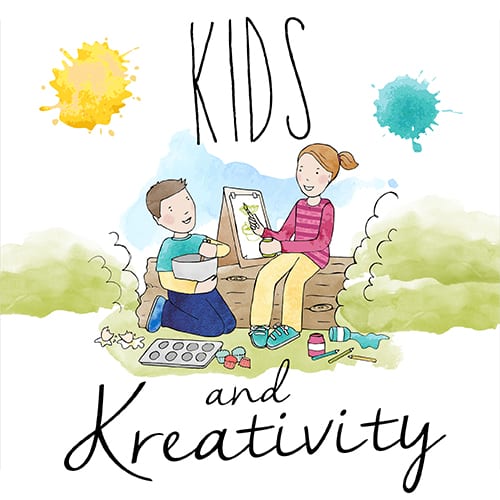
Such a beautiful post Malin – I love seeing the photos and reading about your adventures with Penguin. Brilliant idea to do 30 days wild
LikeLiked by 1 person
Thank you so much Martha! I’m really glad we decided to do 30 days wild this year as nature has really been providing us with most of our ‘highlights’ in life throughout lockdown (and still is) xx
LikeLiked by 1 person
Oh my kids would love to make a poppy!! #kcacols
LikeLiked by 1 person
That’s lovely to hear Nancy! I hope you all have a great time with it! x
LikeLike
Sounds like quite an exciting hashtag or challenge to be involved with. I have always found these types of things great for beginner photographers. #kcacols
LikeLiked by 1 person
It’s been great, we’ve been doing a lot of learning about nature, and it’s got us outdoors almost every day x
LikeLike
These are great – i love the footprints (paw/claw prints) at the start! #KCACOLS
LikeLiked by 1 person
Thank you Lydia! Yes, they were a great find! x
LikeLike
We did #30DaysWild this year too, although it was mostly looking closely at nature in the garden so I haven’t done a round-up this year as I have done with previous years. I love the different footprints spotted on the mudbanks. I didn’t realise that the numbers of herring gulls were in such decline. I love your photos of them. Lovely to watch bumblebees being busy on the tree-mallows. I’m glad the first two crabs were alive and just playing dead. How amazing to see a kingfisher. I love your building a poppy activity. What a brilliant idea. We’ve done some flower deconstruction in our home-learning but I’ve not thought about doing it the other way around. Thanks for sharing your wild activities with #CountryKids
LikeLiked by 1 person
Thank you so much Louise for your wonderful comment! I have enjoyed seeing your daily instagram posts of your activities for #30DaysWild, and your inspirational posts from previous years encouraged me that we should give this a go. And I’m very happy we did, it’s been great! xx
LikeLiked by 1 person
Some great ideas for inspiration here, thank you. And lovely photos. #KCACOLS
LikeLiked by 1 person
Thank you Helen! I hope you’re having a lovely summer, and can perhaps take some inspiration from this for some outdoorsy fun x
LikeLiked by 1 person
I absolutely love the outdoors. Great pictures! #KCACOLS
LikeLiked by 1 person
Thank you so much! Nature has been a real life saver this year in particular, with so many things being closed due to the pandemic x
LikeLiked by 2 people
What amazing ideas and beautiful photos! I love the natural paintbrushes and looking at animal tracks 🙂 #KCACOLS
LikeLiked by 1 person
Thank you so much Hannah! I hope you and your kids are having a lovely summer with lots of outdoorsy fun! xx
LikeLike
So many brilliant activities, so great to get out while the weather is good and enjoy the wild / nature. Some great pictures (especially the sheep). I am very impressed with the daisy picture on the iPad, great idea to use another to show how you would do it. As for plant activities I haven’t tried it but I am told you can put a large daisy or white flower in water with food colouring and it should travel up to the petals.
LikeLiked by 1 person
Thank you Jade!
We’ve been very lucky with the weather during lockdown, it would have been a lot tougher getting through it if we hadn’t been enjoying a bit of outdoorsy time most days. And June was amazing for the most part!
The experiment you mention with a white flower taking the colour of the water and food colouring can be a great one, when it works! When I was little we did it using carnations and that worked really well, but when we tried it with daisies a couple of years back that didn’t work at all. Might get us some carnations and give it another go 🙂 x
LikeLike
You have captured some absolutely gorgeous photos here in your nature challenge. I love being outside and find it very soothing for the soul. I think its important to switch off from technology and the happenings of the world for a little while and just enjoy the beautiful simplicity that surrounds us in nature. #KCACOLS
LikeLiked by 1 person
Thank you Shelley! That’s very true, it’s definitely a good thing for our mental wellbeing, as well as for our physical health, and has been extra important to us this year! x
LikeLike
Such a fantastic array of experiences and activities — and fabulous pictures too #KCACOLS
LikeLiked by 1 person
Thanks so much Enda! We’ve enjoyed it x
LikeLiked by 1 person
Excellent ideas to inspire people to go out with the family and explore X #kcacols
LikeLiked by 1 person
Thank you lovely! I hope you and yours are keeping well and having a decent summer xx
LikeLike
Some beautiful pictures and lovely days out, there is nothing quite like exploring nature. #KCACOLS
LikeLiked by 1 person
Thank you Fiona, too true! x
LikeLike
It’s a wonderful initiative isn’t it, you’ve packed so much in too #countrykids
LikeLiked by 1 person
Thank you Mary! I think lockdown provided us with the perfect opportunity to really get into it this year! x
LikeLike
Some lovely photos. What a great challenge #KCACOLS
LikeLiked by 1 person
Thank you Jo! I’m really glad we decided to do #30DaysWild this year, it’s provided us with a lot of joy during lockdown x
LikeLiked by 1 person
I love these activities for #30DaysWild – I remember reading this when you shared it with #CountryKids last year but you’ve reminded me that we’ve not yet tried the reconstructing a flower activity which I think I’ll have to put on my list for this year’s #30DaysWild. #KidsandKreativity
LikeLiked by 1 person
Thank you Louise! I hope you’ll enjoy that too. I’m quite looking forward to June! Perhaps I should plan our #30DaysWild a bit more this year, it was all very ad hoc last year. Hmm… 🙂 x
LikeLike
Love the idea of doing #30DaysWild, we might need to join in this year! Thanks again for sharing at #KidsandKreativity
LikeLiked by 1 person
Last year was the first time we did it, and it was a great way to really focus on nature and not worry too much about the world beyond, with the pandemic etc… Never did I think we’d still have a back-drop of Covid for this year’s #30DaysWild, too! I’m not sure I will be as good at blogging about it this year, but we’ll definitely aim to connect with nature every day throughout June – which is already beginning tomorrow! Time flies, doesn’t it?!? x
LikeLike